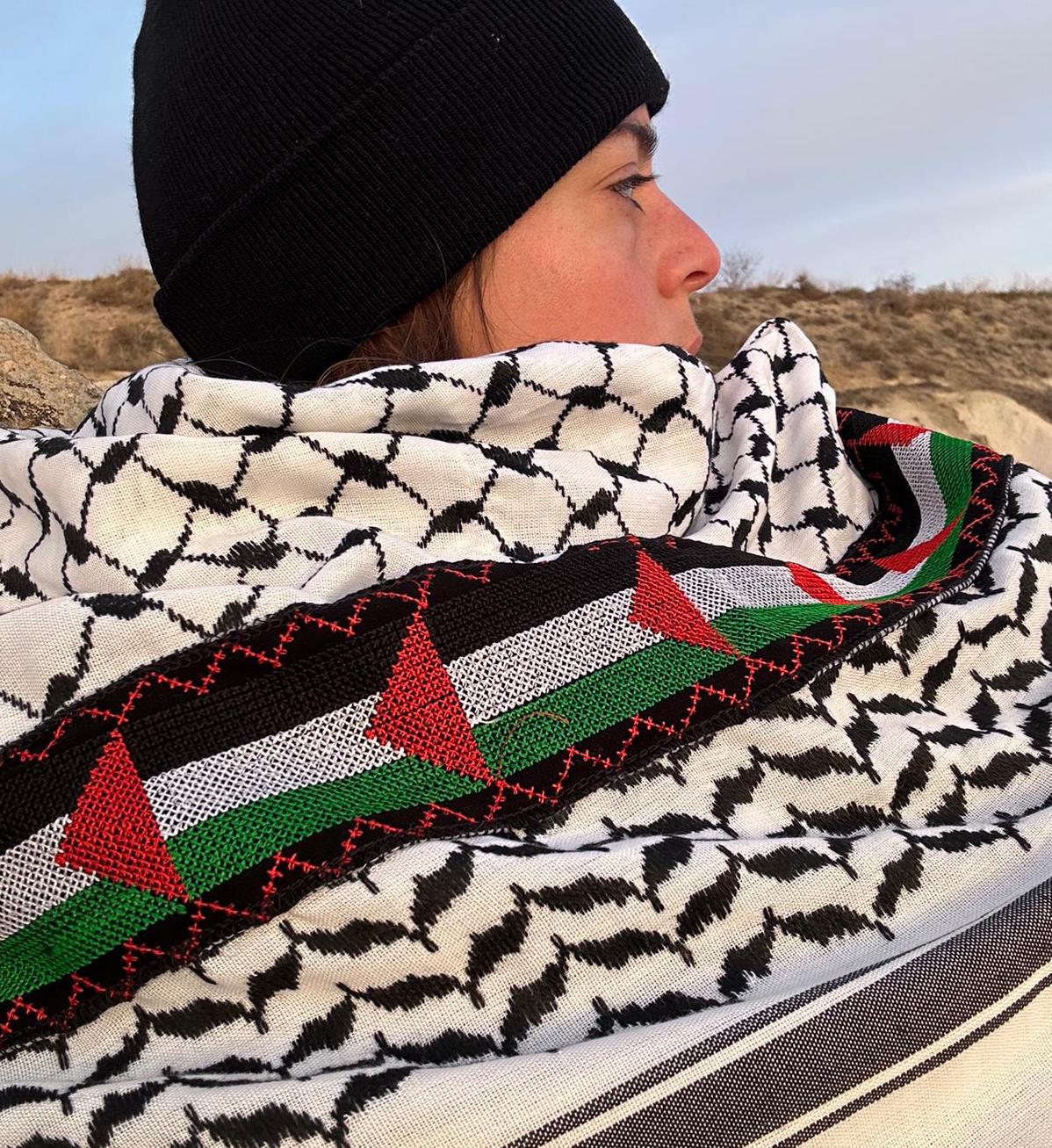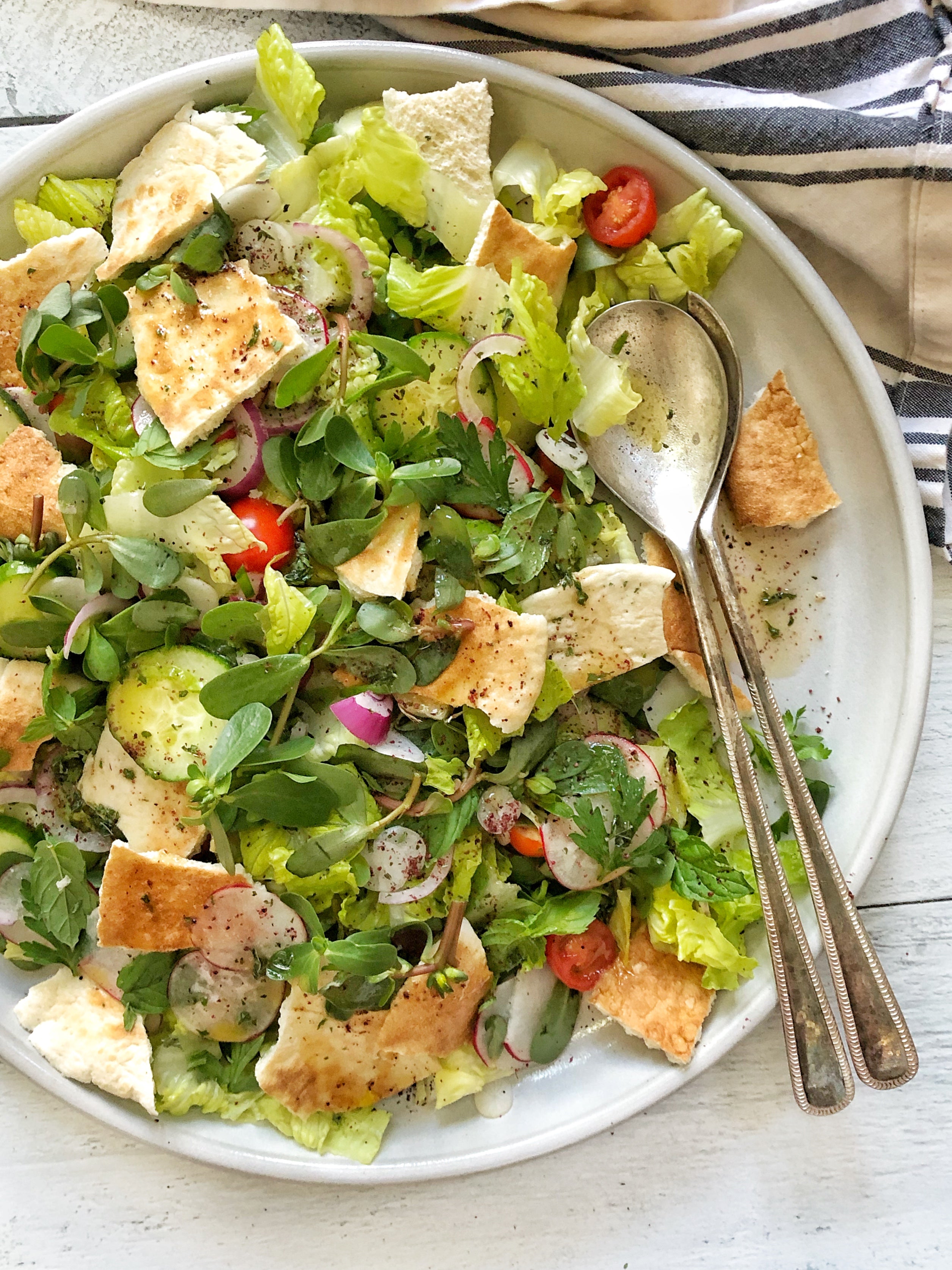
The Meaning of Keffiyehs to Palestinians | 6 Ways to Wear Your Keffiyeh
The keffiyeh holds great significance for Palestinians. With its symbolic stitching and history, the keffiyeh has become an emblem of resistance, perseverance, and unity.
We’ve told you the history of the keffiyeh and the symbolism in its designs, and today we want to share with you the meaning this garment has in everyday life for Palestinians. It's also helpful to know that keffiyeh is an Arabic word that can be transliterated as keffiyeh or kufiya or kuffiyeh, and can also be called a hatta or shemagh.
The keffiyeh is intricately linked to Palestinian identity because of its historical ties to the nation’s struggles. Its embroidery of fish nets, sea waves, bolds, and even what appear to be olive leaves all have symbolic meanings that point to different aspects of Palestinian identity. While many interpretations exist, it is usually believed that these embroidered designs represent the relationship between Palestinians and the sea (fish nets), strength and resilience (sea waves), historical trade routes through Palestine (bolds), and the importance of olive trees in daily Palestinian life (olive leaves).

The traditional black and white Arafat style keffiyeh has become an incredibly popular staple that showcases this embroidery. And it doesn’t stop just there. Keffiyehs can come in an array of colors and pattern designs that all portray an aspect of this embroidery.
Keffiyehs are incredibly versatile staples that allow Palestinians to showcase their identity and pride in nationhood in a variety of ways. They can be worn as a scarf, a headband, and even as a belt matched with a Palestinian thobe.
5 Ways to Wear Your Keffiyeh
1. Belt it, especially if you are wearing your grandma's thobe.

2. Palestinian designer Rand Daboor wears modern keffiyeh prints as turban.

3. Scarf around your neck.

4. Traditional style around the front of the neck wrapped.

5. a gorgeous shawl

For many Palestinians, this daily garment is used to protect themselves from the summer sun and heat, as well as a way to keep warm in the winter winds.
6. Abu Rami, a Bedouin from Jabal Almokaber in Jerusalem, tells us that he wears his keffiyeh like his grandparents taught him. During the summer months, he wears the black and white style keffiyeh to keep cool and protected from the sun. In colder months, he wears the thicker red and white keffiyeh for warmth as he takes care of one of the church and baptism sites he works at.

For years, keffiyehs have been a way for Palestinians to express collective identity and solidarity through clothing. These have become a marker of resistance, unity, sovereignty, and revolution.
In fact, we support artisans in the only remaining factory in Palestine that make these garments. So if you’d like to support their efforts and show your Palestinian solidarity, check out our collection of their keffiyehs here!






1 comment
Love it. I have a few already and will purchase more . Stay strong Palestine . Love from New Zealand.
Lee Madigan
Leave a comment
This site is protected by hCaptcha and the hCaptcha Privacy Policy and Terms of Service apply.